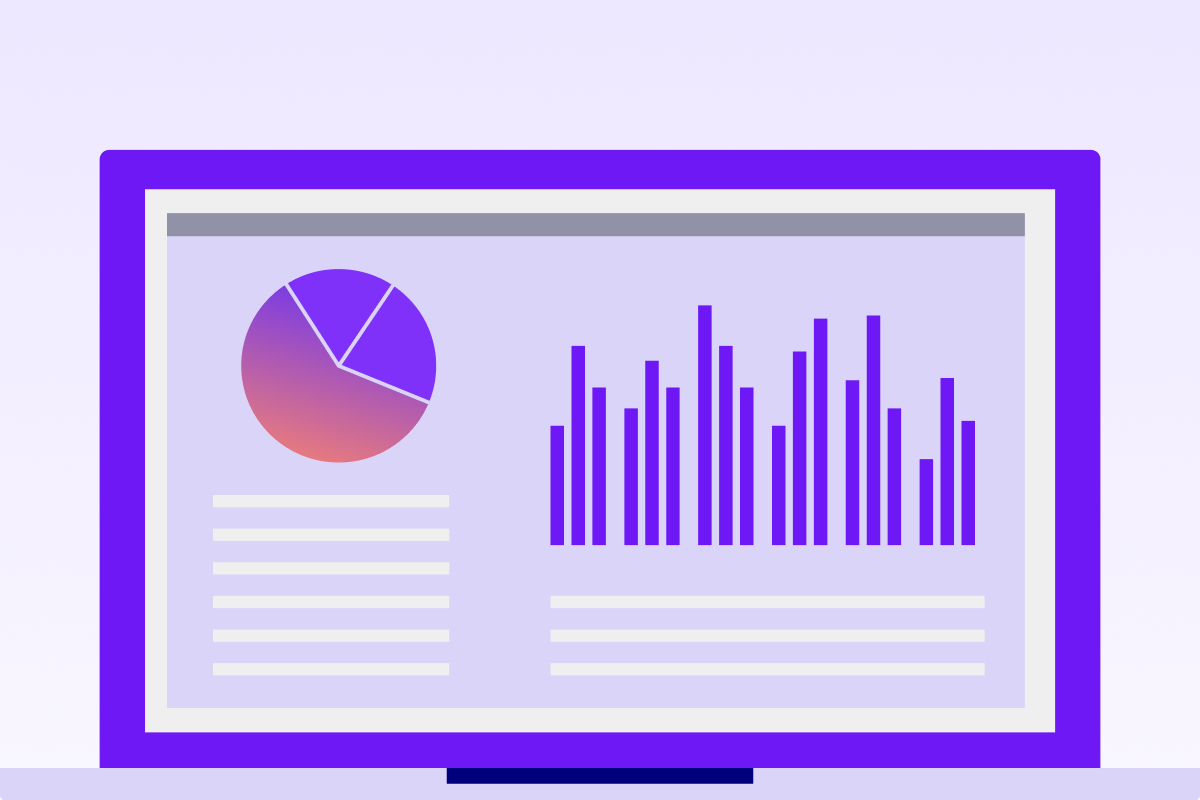
Financial Reporting Template for Finance Leaders in SMB and Mid-Size Businesses
Learn more ->
Maintaining an agile forecasting process will help your business adjust when needed, find greater financial success, and incorporate more variables in a shorter amount of time.


I’ve worked at organizations that just couldn’t get the financial planning process right and it was really hard for the business to succeed. Now that I’m in an organization that has the best tools at its disposal to optimize the financial planning process, it’s amazing to see what we can achieve.
Content created by: Sasha Lamachenka, DemandGen Manager at Abacum
Across industries, regions, and business types, things move quickly. One month can be a challenging month accompanied by low revenue, unforeseen costs, and hiring challenges. The very next month could bring a major contract deal, new supplier agreements, and a well-adjusted group of new hires. In order to adapt to and account for everything within an organization – the good and the bad – FP&A teams have to be able to adapt on a moment’s notice.
When big swings happen in business, everything needs to change; forecasts need to be adjusted, strategies should move in lockstep, and teams across the organization should adjust their behaviors based on these changes. As the strategic center of most businesses, finance leaders and their FP&A teams that are equipped with the right financial planning tools have the power to move the needle within your organization.
If you’re aiming to perfect a forecasting process that is dependable yet flexible enough to encompass business shifts, consider nailing down a financial planning template that can make it all possible. Agile financial planning will give your FP&A team a budget plan baseline each month while still taking into consideration a variety of moving variables.
In business, financial planning is a lot like a budget spreadsheet in personal finance but used in a different way and for different reasons. Using some sort of financial planner tool for your organization can provide clarity around the financial health of your business and help define upcoming financial goals, much like a budget worksheet can help a household stick to a monthly budget and use money wisely.
Although financial planning is more complicated than building a monthly budget meant for households, the two share some critical components. A solid financial plan for a small business, mid-market business, or large enterprise will showcase expected revenue and upcoming expenditures, just like a personal budget may highlight monthly income and recurring bill payments.
At the end of the day, financial planning is a tool to understand the overall financial health of your business, keep a close eye on the impact business decisions are having on your financial standing, and monitor the inflow and outflow of cash.
For businesses, financial planning can be as intricate as you desire. If you’re a startup in need of a business plan, it might be more pertinent to take an approach more aligned with a simple budget and revenue forecast.
However, for businesses that are operating regularly and have strategic financial goals to reach, a more complex approach is likely necessary.
Don’t worry! This isn’t meant to overwhelm you; if you’re just getting started or you’ve been doing this for decades now, double-check that your financial planning process encompasses the following pillars:
If your company isn’t bringing in sufficient revenue, you probably won’t be able to keep your doors open for more than a few months. Revenue forecasting is probably the most crucial – and most analyzed – pillar of financial planning in the business world. By utilizing a financial planning template, you can keep an eye on whether or not your business is meeting, exceeding, or missing expectations from a revenue perspective.
Overspending can wreak havoc on the overall financial status of your organization. Once revenue is consistently hitting monthly targets, dive into the expenditures of doing business to add extra cushion to your net income. Be sure to account for all monthly expenses including liabilities and payroll – don’t leave anything out!
One of the most expensive and most important components of business success is your people. To optimize the hiring strategy internally and optimally support your HR department, headcount planning should be part of the regular financial planning process. New hires, outgoing employees, summer interns – these all need to be accounted for!
You can’t truly grow your business without strategic investments, but these endeavors usually come with a lot of financial risk. If you want to launch a new product line, invest in updated machinery or technology, or even educate your staff on a new skill, these items are all considered strategic investments.
The amount of cash you have on hand directly impacts your ability to do business. If you run out of cash, you can’t pay bills, purchase supplies, or conduct customer outreach, severely limiting your ability to bring revenue in. Track everything that comes in and everything that goes out and you’ll be better off for it.
It’s not uncommon for business leaders to forget about short-term and long-term contingency planning when building savings goals. If your business faces a cyberattack or is forced to halt operations for an unforeseen reason, can you stay afloat on the funds you have saved? Try planning for a 3-6 month savings cushion as an emergency fund – just like you would for your personal budget.
If you don’t already have a financial planning template for your business, let your financial statements provide the foundation. The cash flow statement, balance sheet, and profit & loss statement contain so much valuable information – it’s why investors and lenders look at them so closely!
From there, create a tailored approach to your financial planning template that showcases all the critical KPIs for your business. Before you make a business decision, what information are you looking for? By bringing all that information into one place, you can make better decisions quickly and have a long-standing tool filled with both historical and current financial data.
Even without a fancy SaaS tool, businesses can create financial planning templates in Microsoft Excel or Google Docs. These are great solutions if you want to know how your financial data is looking on a monthly basis. Start with a simple budget, and from there, incorporate the data from financial statements, as well as supplemental information to add more context around the financial results your organization is seeing.
When a business is still in the startup stage and looking to create a robust business plan, a financial planning template is crucial. Although it won’t contain real-time financial information since no transactions have happened, it can be used to forecast expected revenue based on the product or service you’re taking to market.
Investors and creditors require new businesses and startups to provide financial forecasts before they’ll agree to partner with those organizations. If you need to source funding or simply secure a business loan, you’ll be required to provide a financial picture that tells the whole story of your business. How much capital do you already have accounted for? How quickly do you anticipate breaking even? What expenses will you need to cover when starting your business? All of these questions can be answered in a startup-oriented financial plan.
The pace of business is faster than it has ever been. With high highs and low lows creating an intense environment for businesses to operate in, FP&A teams need to be able to rely on thoughtful financial planning methods no matter what is happening in the business landscape.
You might be seeing record sales because of a viral advertisement or a slump due to consumers cutting back on spending because of economic factors outside of your control; either way, there should be a constant process in place that analyzes multiple data sources, incorporates market trends, and predicts future financial events for your business. With next-generation financial planning templates and related tools, your business can optimize the financial planning process to include more than last month’s actuals paired with a basic growth calculation.
To keep up with the money management demands of today, include the following items in your financial planning template.
If you decide to change out a feature in your product to cut costs, what impact with that have on your bottom line? I shouldn’t take multiple financial analysts hours to get to the bottom of this question. With proper scenario testing infrastructure, you can simply “plug-and-play” with different numbers, testing out flowthrough results that will be impacted. If you reduce the cost of manufacturing your widget by $5, that $5 will flow through every COGS calculation and net profit or loss analysis, but only with the proper financial planning template can the overall impact be seen in seconds.
The best part? If the result doesn’t get you closer to your financial goals, you can adjust it as many times as you’d like, see new results, and make a more informed decision.
The definition of a good budget template has changed over the years. “Good” is no longer basic, it’s usually more advanced and detailed, just like a good financial planning template. Along with your financial planning template, aim to enable detailed analytics that can be seen and understood by relevant people within your organization. This might include supplemental data visualizations, trend analysis, or other insights that offer more context when needed.
If you’re not incorporating market behavior into your forecast models and financial predictions, then you’re not including the whole picture. Are sales down by 10% in your industry across the board? If so, your revenue models should include that risk.
When any entity – a person or a business – uses a budget planner tool of some sort, they generally look at what they predicted would happen and compare it to what did happen. If a household thinks they’ll spend $200 on groceries in one month but end up spending $400 on groceries that month, there is a 2x unexpected variance that they’ll need to manage.
For businesses, variances from the monthly budget can be just as detrimental as they are for households all over the world. If your company spends more than expected or doesn’t bring in sufficient revenue within a given period, you’ll end up falling short of your financial goals time and time again. If variances are happening too often, it’s a signal to the FP&A team that the financial planning template that’s in use isn’t as effective as it needs to be.
To get ahead of variances when assessing the monthly budget template or financial planning template, adopt agile forecasting processes that can be easily adjusted when new financial information becomes available. Most businesses do monthly forecasts, but what if we could update forecasts on a weekly or daily basis based on sales, expenditures, and other data? Now, with new tools available, this becomes so much more possible.
Microsoft Excel has been and likely will be a key tool for FP&A teams. A lot of financial planning and modeling can be done within an Excel template, but if you’re ready to kick your budget template up a notch, invest in a financial planning technology that is compatible with your business. This isn’t a college student trying to manage having a new credit card; business is complex, and in today’s landscape, advanced tools can help manage that complexity.
Every person who is in FP&A will be intimately familiar with the financial planning cycles a business goes through because those are the most stressful times of finance jobs! The annual budget period will go down in history as one of the most chaotic times of the financial calendar, especially if it overlaps with year-end.
To get the most out of each cycle, brushing up on the purpose of that cycle can be incredibly helpful.
There’s a lot of pressure on the annual budget cycle. It’s a time when businesses predict the financial outcomes and define their financial goals for the entire next year. It usually considers the current year’s data, along with inputs and trend analysis from prior years. Understanding YOY growth rates, predicting the next year’s economic landscape, and securing support from business stakeholders are all focal points of the annual budget process.
A bit more granular than the annual budget template, the quarterly financial cycle is a great time to refresh financial goals or adjust targets that have moved since the annual budget plan process.
Every month, FP&A teams spend the end of the month trying to get monthly budget plans and expense tracker information in order to predict what will happen the following month. This is one of the last chances to adjust the forecast, and ultimately, reduce variances in actuals vs. budget analysis down the line.
Finding the right SaaS solution can help transform your FP&A function and now you don’t have to look any further. Abacum is an advanced platform that contains the basic functions of FP&A like a budget template, as well as interactive, next-generation features that offer business leaders insights into how their business is truly performing.
Our customers get immediate access to a free financial plan template, along with many other financial templates that will change the way their organization interacts with forecasting, money management, savings goals, and everything in between. In one place, Abacum makes it easy to conduct scenario testing, solidify optimal headcount plans, and forecast all critical financial aspects of doing business.
The step-by-step approach within our tool makes it easy for FP&A teams to update the monthly budget, make adjustments based on various factors, automatically refresh the budget output, and get leadership approval before cementing the final results.
FP&A is changing but we’re here to help. If you want to know how to optimize your financial planning template or use our tool more broadly, get in touch with us today. As a finance-focused organization, we know what it’s like to navigate the demands of FP&A without the right tools in your corner. With Abacum’s FP&A software, you’ll never have an annual budget meeting as stressful as they are right now – come find out for yourself.
The most important part of a financial plan isn’t actually the plan at all, it’s how you manage variances that get exposed over time. If you can adjust the financial plan you’re relying on, refine your planning approach when new information is revealed, and reduce budget vs. actual variances to a greater degree month-over-month, then you’re getting the most important stuff right.
A financial plan is a lot more broad than a budget. Most budgets, even in personal finance, look only at how much money is coming in (revenue) and how much is expected to go out (expenditures). A financial plan encompasses many other factors like headcount, trend analytics, visualizations, graphs, and strategic financial goals.
Financial plans are usually internal facing. They’re used as tools to help your business anticipate what is to come. External bodies will regulate the financial reporting that public companies publish, but when it comes to planning, there’s not much in the way of regulatory requirements.